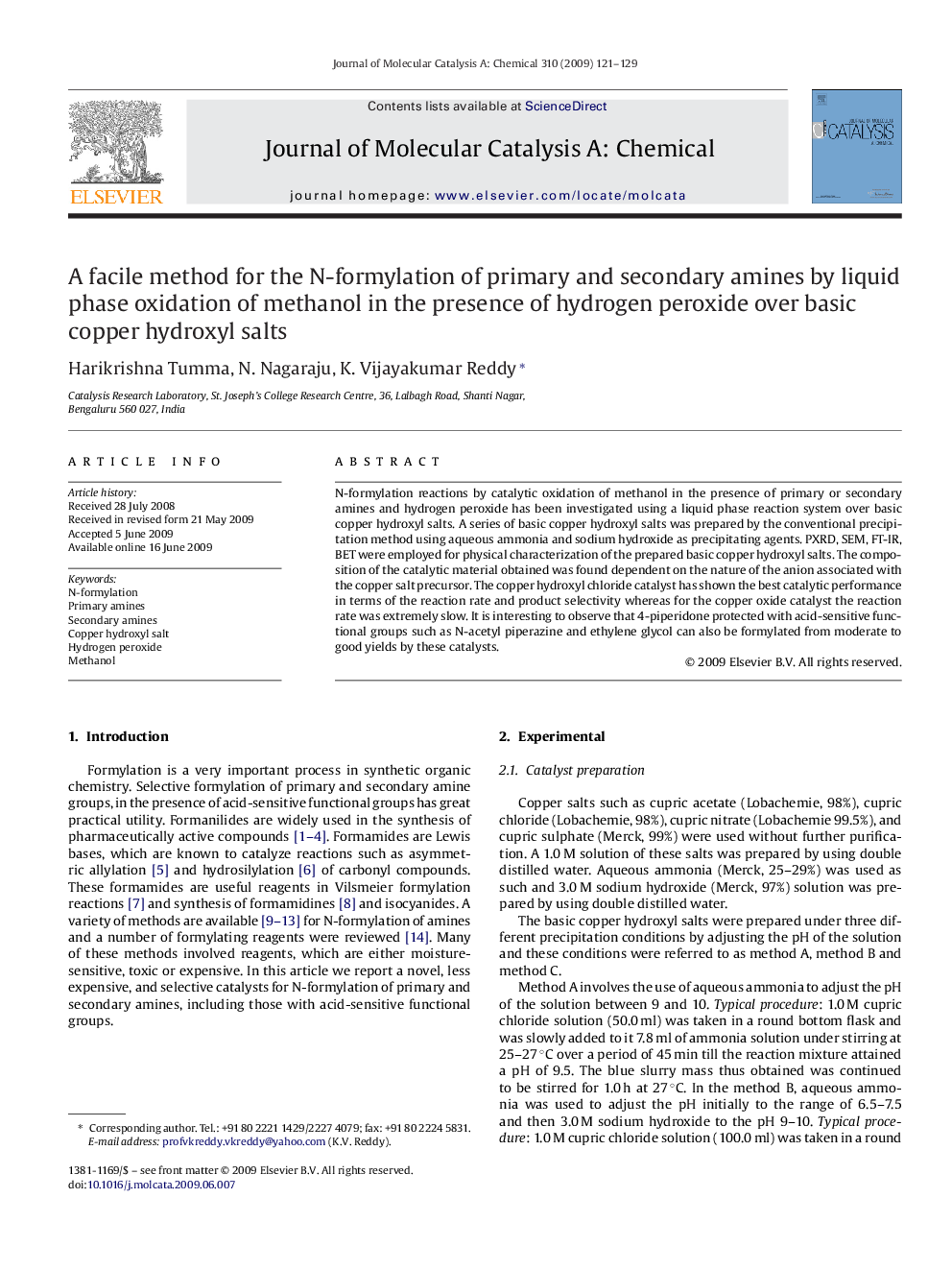| Article ID | Journal | Published Year | Pages | File Type |
|---|---|---|---|---|
| 66921 | Journal of Molecular Catalysis A: Chemical | 2009 | 9 Pages |
N-formylation reactions by catalytic oxidation of methanol in the presence of primary or secondary amines and hydrogen peroxide has been investigated using a liquid phase reaction system over basic copper hydroxyl salts. A series of basic copper hydroxyl salts was prepared by the conventional precipitation method using aqueous ammonia and sodium hydroxide as precipitating agents. PXRD, SEM, FT-IR, BET were employed for physical characterization of the prepared basic copper hydroxyl salts. The composition of the catalytic material obtained was found dependent on the nature of the anion associated with the copper salt precursor. The copper hydroxyl chloride catalyst has shown the best catalytic performance in terms of the reaction rate and product selectivity whereas for the copper oxide catalyst the reaction rate was extremely slow. It is interesting to observe that 4-piperidone protected with acid-sensitive functional groups such as N-acetyl piperazine and ethylene glycol can also be formylated from moderate to good yields by these catalysts.
Graphical abstractCopper-based catalysts in the form of hydroxyl salts are effective in oxidation of methanol in the presence of dilute hydrogen peroxide to produce N-formylated amines from primary or secondary amines. Acid-sensitive functional groups can also be formylated in moderate to good yields.Figure optionsDownload full-size imageDownload as PowerPoint slide
